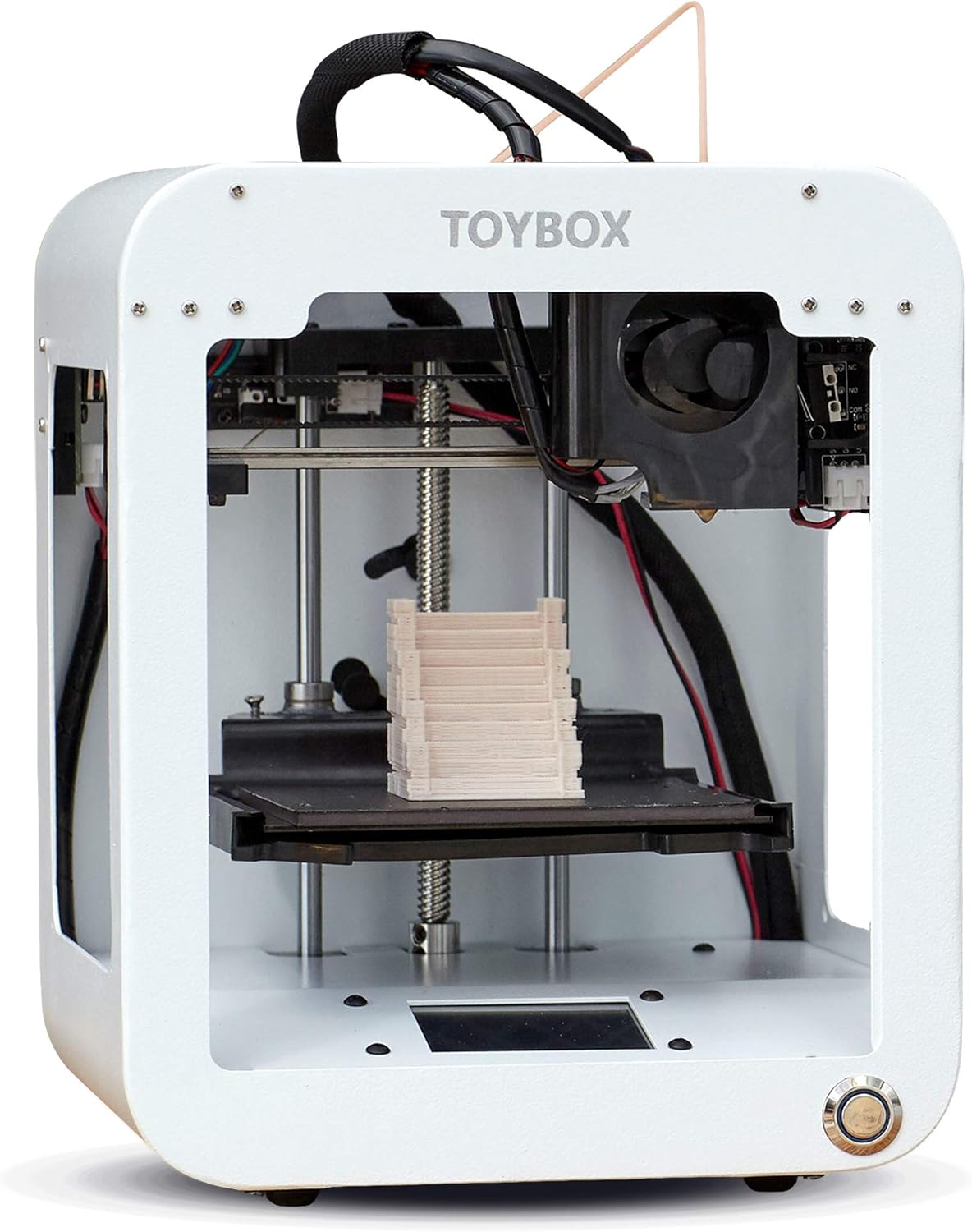Compare H2D vs Toybox
Comparison between the best 3D printers
Choose the best 3D printer at the best price. The cheapest 3D printers are here.
Buy a 3D printer here with 3D Fila.
 |
 |
|
| Model | H2D |
Toybox[BUY Toybox] |
| Printing Material | Filament | Filament |
| Buy Filament for Bambu Lab H2D | Buy Filament forToybox Toybox | |
| Estimated price | $1899,00 | $299,00 |
| Manufacturer | Bambu Lab | Toybox |
| Release Year | 2025 | 2024 |
| Print Volume [mm] | 350x320x325 | 70x80x90 |
| Printer Size [mm] | 492x514x626 | 190x190x230 |
| Weight [kg] | 42,3 | 3 |
| Power Loss Recovery | YES | NO |
| Enclosed printer | YES | NO |
| Bed Leveling | Automatic | Manual |
| Filament End Sensor | YES | NO |
| Bed type | Heated | |
| Power supply system | Direct Drive | Direct Drive |
| Standard nozzle | 0,4 | 0,5 |
| Maximum Nozzle Temperature [°C] | 350 | 210 |
| Maximum Bed Temperature [°C] | 120 | |
| Maximum printing speed [mm/s] | 600 | 60 |
| Filament holder | YES | YES |
| Camera for supervision | YES | YES |
| Recommended filaments | PLA, PETG, ABS, ASA, TPU, PVA, Nylon (PA) | PLA |
| Recommended slicers | Bambu Studio | Toybox |
| Maximum Resolution [mm] | 0,01 | 0,2 |
| Processor | ||
| Display | Touchscreen 5'' | Touchscreen 2,4'' |
| Power Supply | ||
| Connectivity | Wifi, Bambu bus, Cartão SD | Wi-fi |
| Operating systems | Windows, Mac, Linux | iOS, Android |
| Date of registration in the system | 2025-03-31 | 2024-08-06 |
| Release date | 2025 | 2024 |
| Extra features | Bambu Labs H2D combines high-speed 3D printing with a chamber heated up to 65 °C, dual extrusion with automatic nozzle switching, an AMS for filament drying and exchange, and AI sensors that detect failures. It offers optional laser and digital cutting capabilities, features intelligent calibration through computer vision, vibration control, enhanced fire safety, and real-time camera monitoring. | The Toybox 3D printer is an excellent option for children and beginners. Easy to use, with intuitive setup and simplified operation via an app. The Toybox allows you to print thousands of toys and projects through a user-friendly interface. It has a removable magnetic table that makes it easy to remove printed objects. The filament is PLA, safe for children, and the printing is reliable and error-free. It also offers custom design options, allowing you to create and print drawings and photos. |
| Support for multiple colors and materials (AMS and CFS) | YES | NO |
Notes * |
||
| Cost-benefit | 7 / 10 | 6 / 10 |
| Hardware | 7.2 / 10 | 0.8 / 10 |
| Tela | . | . |
| Print volume | 4 / 10 | 3 / 10 |
| Performance | 5 / 10 | 0 / 10 |
| [BUY Toybox] |
Conclusion |
| In conclusion, the Bambu Lab H2D and the Toybox 3D printer each cater to distinct market segments and user needs, offering unique advantages and drawbacks. The H2D stands out as a professional-grade printer, designed for advanced users who require high-speed printing capabilities and versatility with materials. With a significantly larger print volume and advanced features like power loss recovery, automatic bed leveling, and dual extrusion, it is suitable for serious hobbyists and professionals aiming to create intricate designs or prototypes. Its ability to handle a wide array of materials at a high resolution also increases its potential for diverse applications. On the other hand, the Toybox 3D printer emerges as a beginner-friendly option, ideal for children and those new to 3D printing. Its lower price point, simplified operation, and focus on user-friendly features make it a great choice for educational settings or casual users looking to create toys and simple projects. Although it lacks the expansive capabilities and advanced features of the H2D, it fulfills its purpose effectively for its target audience. The significant difference in pricing reflects these distinctions, where the H2D positions itself as a premium option with robust functionality, while the Toybox appeals as a budget-friendly choice for ease of use. Ultimately, the decision between the two will depend on the user's experience level, intended applications, and budget constraints. |

